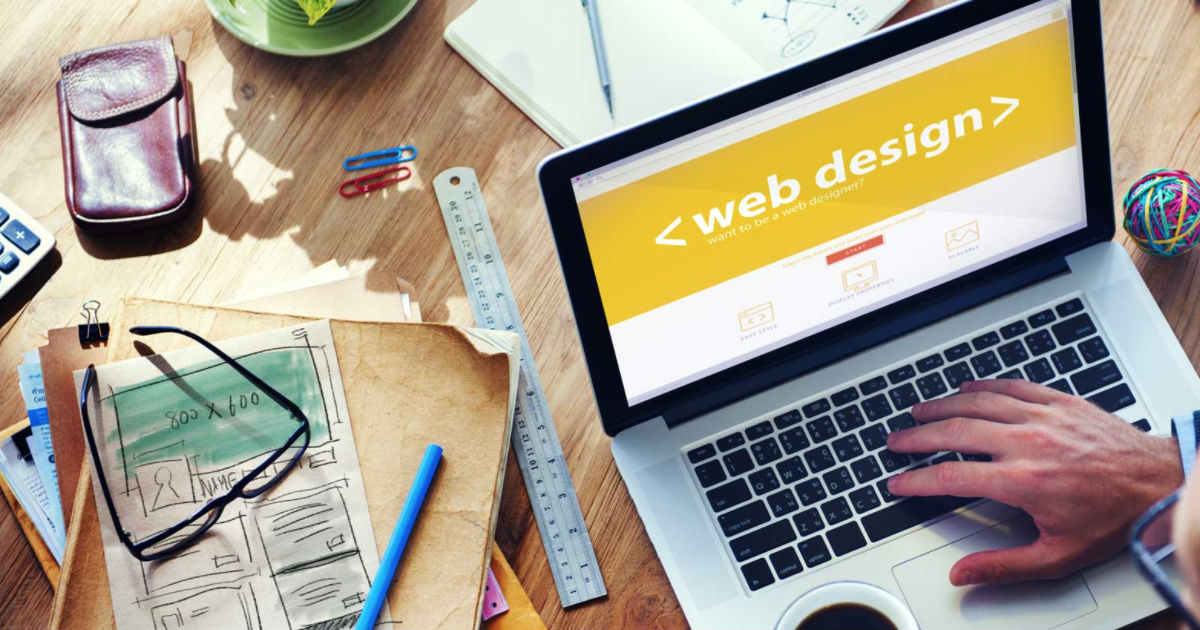Website designing is the art of beauty and a creative layout. In other words, The best part of beauty is that which no picture can express. So, we can say that website design or its layouts are explained or judged by the online users of the website or its website owners. There are many reasons to affect the impact or usability of a website, and it is not just about
HOW IT LOOKS GOOD, but also its function about
HOW IS IT EASY TO USE.

The website is a collection of web pages. It has its own unique address through the internet. Today, you turn around you and check some website has no properly organized and even designing is very poor. Whenever you create a website design, you don’t remember the following:-
- How to create web pages?
- How to make a website design and it works?
- How to judge right design approaches and website layout, themes etc at all.
So, Do you think about HOW TO MAKES GOOD WEB DESIGN?
The following steps always are remembered whenever you create a website. The basic principles that will make your website unique, beautiful, pleasing, easy to use, engaging, and an effective.
1. PURPOSE
Every user always needs good and unique web design because every user or web visitors always looking for good information, entertainment, they need some type of information for interaction, or they require each transaction detail of the business. In other words, the website consists of different web pages. Each page of the website shows the clear purpose of business and fulfills all needs of website users in the priority basis and effective manner.
2. COMMUNICATION
People on the internet and they always want to get all information quickly. So, you always remember your communication method should be cleared or properly. Because every user wants the information should be clear, easy, understand and implement. It makes your information easy to read and digest. Some points always include in your web design and the given below:
- The information should be organized using headlines and sub-headlines.
- You always use bullet points instead of long windy sentences.
3. TYPEFACES
Whenever you write the code of the website, it shows by default Sans Serif fonts such as Arial and Verdana because these fonts are easier to read online. The Sans Serif fonts are contemporary looking fonts without decorative finishes. The ideal and perfect font size for reading easily online is 16pixels (px) and stick to a maximum of 3 typefaces in a maximum of 3 point sizes to keep your design streamlined.
4. COLOURS
You always be chosen good color schemes that make your website pleasing and influenced by others. The website color contrast should be cleared for the text and background color should be used that will make reading easier on the eyes. The complementary colors create balance and harmony and the vibrant colors create emotion and should be used sparingly for buttons and call to actions. And last but not least, white space/ negative space is very effective at giving your website a modern and uncluttered look.
5. IMAGES
Pictures or Images are speechless. Every picture can speak a thousand words. So, you always choose the right images for your website. It can help with your brand promotion, positioning and connecting with your right targeted audience. If you don’t have any high-quality professional photos on hand, consider purchasing stock photos to lift the look or appearance of your website. And also, consider using infographics, videos,and graphics because these can be much more effective at communicating than even the most well-written piece of text.
6. NAVIGATION
Navigation is the most important function of website designing. Navigation always stand out and gives consistent results. You always be remembered navigation should be easy because it is for people to take action and move around your website. Navigation is the process to move from one position to another and it follows planning or a route.The same methods for the effective navigation area should be :-
- A logical page hierarchy,
- Using bread crumbs,
- Designing clickable buttons
- Follows the ‘three click rule’
7. GRID BASED LAYOUTS
Grid based Layout is the technique for website layout and it is in the form of x and y pixels. It shows content randomly on your web pages. The grid based layouts should be arrange content into sections, columns and boxes that line up and feel balanced, which leads to a better looking website design.
8. “F” PATTERN DESIGN
“F” pattern design techniques help in study of Eye Tracking. This method to be identified and helps the scanning of computer screens. Most of the people are on the top and left of the screen and the other right side of the screen is rarely seen. Whereas trying to force the viewer’s visual flow, effectively designed websites will work with a reader’s natural behavior and display information in order of importance (left to right, and top to bottom).
9. LOAD TIME
Every user or website visitors, they hates a website that takes ages to load. The best tips whenever you create or make pages load time should be matter less or effective. The same points are always remembering- Image sizes and Scale, Combination of code in a central CSS or JavaScript file (this reduces HTTP requests) and minify HTML, CSS, JavaScript (compressed to speed up their load time).
10: MOBILE FRIENDLY
First of all, your website should be mobile friendly. It means that users can easily access websites from multiple devices with multiple screen sizes. If your website is not mobile friendly, you can rebuild your website in a responsive layout that helps you to adjust in different screen widths. You can also build a dedicated mobile site as per requirement.
